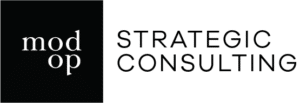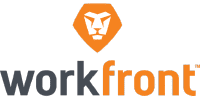“If everything seems under control, you’re just not going fast enough”
– Mario Andretti, car racing legend
Companies in slower-paced industries used to be able to dismiss Mario’s sense of urgency because they felt safely removed from the digital fast lane. As the pace of change accelerates, however, there is less likelihood that slow or complacent executers will be able to keep up, much less grow. This article explores how executing with velocity is an organizational capability and prescribes seven steps that will help you accelerate velocity to compete and win in your increasingly fast moving marketplace.
Speed is a mindset and a competency
The first thing you need is a real desire to accelerate velocity. Often this comes from a market disruption, such as a new competitor creating a back-to-the-wall fight for survival and relevancy. Alternatively, new leadership or a compelling new market opportunity may define the need for speed and raise its importance within the company priorities. Whatever the reason, there must be a deep, enterprise-wide understanding of the value of accelerated delivery in terms of its impact on competitive position, market share, and/or pricing margin to adopt the required mindset, which can mean reducing priority cycle-times by at least 50 percent or more.
Now that speed is an organizational priority, it is necessary to build a competency to support it. Like a racecar driver and pit crew team, a velocity focused organization requires rigorous planning, coordination, empowerment, and a discipline for continuous improvement to turn strategy into execution.
With these in mind, here are some guidelines for building a velocity mindset and competency in your organization:
- Know the finish line. Perhaps the most powerful tool for an organization to increase velocity is defining the objective. More than a decade ago, Geico changed the auto insurance industry by offering a quote in 15 minutes or less. This seemingly radical goal cascaded across the organization as clear definition of success that is linked back to each individual’s work and creates a sense of collective purpose.
- Set the metrics and boundaries. With the finish line in mind, break the problem into its relevant parts, setting smaller targets that add up to a faster whole. John Doer’s book Measure What Matters outlines a great approach to setting organizational “Objectives and Key Results” (OKR’s) honed from his experience with Intel, Google, LinkedIn and other winning companies. Keep in mind that speed requires counterbalancing metrics to avoid compromising the brand. Clear requirements around product cost, quality, customer service, employee experience will make sure you stay in the safe zone.
- Choose your vehicle. While Mario’s Formula One car is faster, it’s not the winning choice at Daytona or the Paris-Dakar Rally. Executional velocity is no different, with several considerations for rightsizing the project vehicle to the task:
- Scale: Rightsize the effort to the task. Smaller scale projects can thrive with a skunkworks approach. But a skunkworks would not have been effective for a project on the scale of Intel’s famous coordinated competitive response to beat Advanced Micro Systems that involved the entire Intel organization.
- Time to Market: While building up a velocity focused organization over time is ideal, some opportunities can’t wait. Creating a fluid resourcing model that can staff up or down with internal or contract labor keeps things moving forward while the organization catches up.
- Methodology: There are lots of ways to manage a project. While methodologies like Agile are extremely effective at high velocity development cycles, the additional change management effort with any new approach needs to be weighed against the benefits and other considerations. You may not be able to wait for the entire team to get up to speed on Agile, so you may want to adopt a learn-as-you-go and learn-what you-need strategy to keep things moving.
- Alternate Channels: New channels continue to emerge that can be harnessed to accelerate execution. Hive’s Kevin Guo built a game that pays 600,000 “workers” pennies-per-click to label photos. This paid human assistance helps train Hive’s AI system at an unmatched level and accelerates their AI product’s arrival point. Customer feedback, social channels, machine learning, and yet unknown channels are waiting to increase your velocity.
- Resource: Resourcing for speed must include short- and long-term goals to ensure both receive adequate investment. It’s easy to burn all your investment fuel on incremental labor for a short-term acceleration but long-term improvements in process, systems, and culture will drive more sustainable velocity.
- Remove roadblocks and distractions: No matter how strong a start, every project runs into challenges that can reduce velocity. Ensuring there are clear lines of decision making with an emphasis on employee empowerment keeps the team moving without excessive oversight (this is one area Agile excels). Assigning a project champion to provide organizational support and address roadblocks is also essential.
- Deliver and learn: Nothing ever goes like we think it will, especially at higher speeds. Processes break down and alternative opportunities emerge. Building in debrief sessions where the entire team candidly shares what they learned and how to improve is critical to improving results.
- Get help when you need it. With so many other business priorities, few companies staff for special projects or high velocity development cycles. Bringing in experienced executives to augment your staff’s horsepower and subject matter expertise is a great way to increase velocity without impacting other priorities.
While not a strategy in itself, executing with velocity enables companies to compete and win in a rapidly accelerating marketplace. So strap in, rev your engines, and get ready to shift into the fast lane.
















